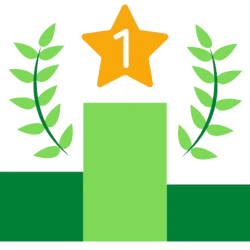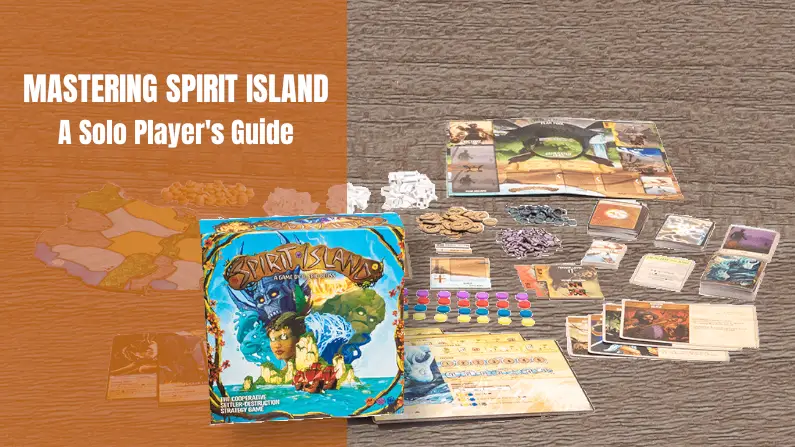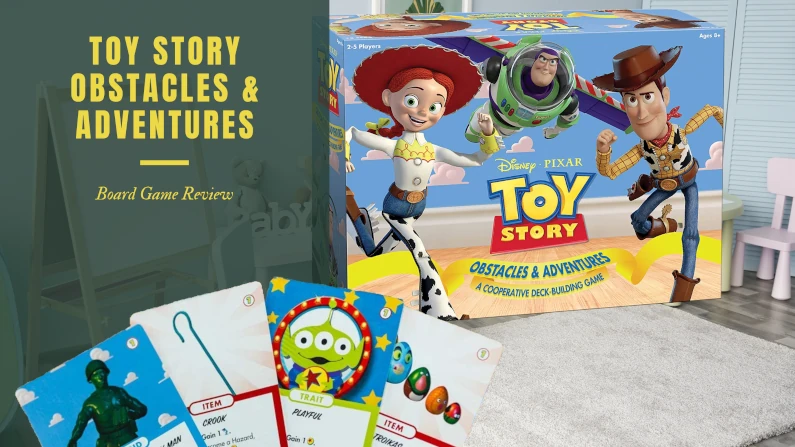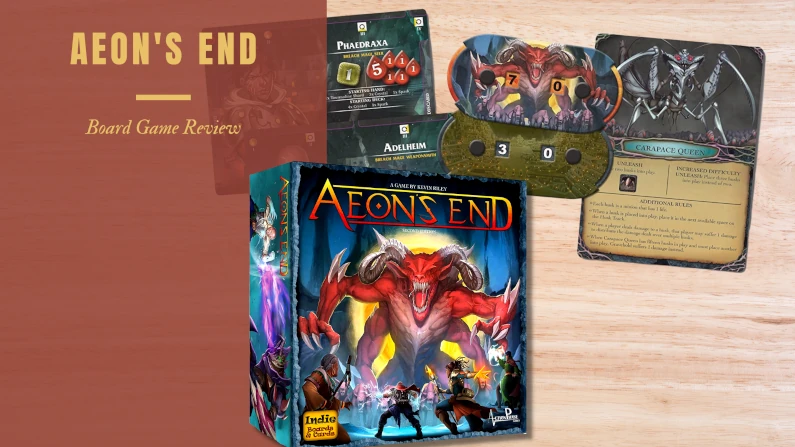Azul vs Patchwork | Which Board Game Is Better?
We are an affiliate. We really hope you enjoy the products we recommend! When you click on links we may receive a commission or other compensation at no cost to you. Thank you for coming to our site and for any links you use. We really appreciate it.
Azul and Patchwork are both quite similar in that they have a very unique theme and gameplay. They are both definitely family games that can be played from 8 plus and that makes them very accessible.
So, which one should you choose? In this article we go through a brief overview of the games and their differences and then recommend the best game.
For those who just want the answer then I recommend Azul as the game to choose. If you want to find out why then read on.
These are both excellent games in their own right and for those that would like to know why then read on to find out why I chose Azul.
| Azul | Patchwork | |
|---|---|---|
| Designer | Michael Kiesling | Uwe Rosenberg |
| Publisher | Next Move Games | Lookout Games |
| Release Date | 2017 | 2014 |
| Players | 2-4 | 2 |
| Age | 8 | 8 |
| Playtime (m) | 30-45 | 15-30 |
| Expansions | Yes | Yes |
| Complexity | Easy | Easy |

Table of Contents
Azul Overview
Azul is a beautifully made tile laying game that will have you straining brain cells trying to beat your opponents. On the surface it is a very simple game but you can quickly find yourself behind and with none of the tiles you need.
You are the artist hired by the Portuguese King to decorate his palace. You do this using beautiful ceramic tiles and as you add tiles you gain points. Careful though, if you drop any then they will be subtracted from your score.
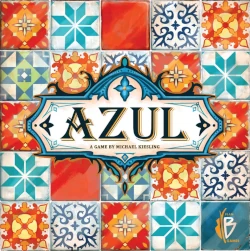
The game starts with 5-9 discs that represent factory displays. There are 5 different tile designs and randomly 4 of these will be placed on each disc.
The game is round based where one set of tiles on the displays are used up then the round is over. Each round finishes with a scoring phase.
During the round each player picks one design tile from each display and places it on the left side of their board. The remaining tiles from that display are placed in the centre of the table.
Once all the tiles have been taken the scoring phase happens.
Each full row on the player’s card means one tile is placed on the wall gaining 1 point. If that tile is placed next to another tile then the player gets 2 points.
If there are three tiles connecting the row that the tile just made then it is three points and so on.
There is a bag that holds the tiles yet to be played and the displays are replenished from this. The rounds repeat until a player finishes a horizontal row.
Sounds good right? They are not necessarily the winner though. The objective of the game is to gain more points than anyone else.
Pros
Cons
Patchwork Overview
Patchwork is a quaint game of quilting for two players. The objective is to gain as many victory points as possible. THis is done through the quantity of buttons you have and has as few holes in your patchwork quilt as possible.
There is a time board to indicate when the game is finished and this is placed between the players. Two time tokens, one for each player, go on the start square of the time board. There are several 1 x 1 square patches that we will come on to later.
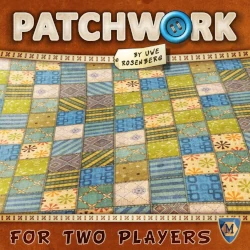
Around the time board is a circle of randomly placed patches. These are the things you will pick up to make your quilt as the game progresses. There is a neutral token that moves clockwise around the patches and starts just after the lowest value patch.
Each player has a quilt 9 x 9 quilt board on which to make their quilt. They also start with 5 buttons. There are 1’s, 5’s and 10’s button counters that you will accumulate and you will start with 5 buttons.
In Patchwork the person who is behind on the time board goes next and this potentially means that one player can have multiple turns. The player can take 1 of two actions per turn:
Move on time and get Income
The player can choose to move forward on the time board and will move to the space in front of the other player. They will then receive the number of buttons that equals the spaces on the timeboard they have just moved e.g. if they moved three spaces then they get 3 buttons.
Take a patch
The player can choose to take a patch from one of the three patches in front of the neutral token.
The chosen patch has a button cost that must be paid for the patch. If you don’t have enough buttons then you can’t buy the patch. Once purchased you can move the neutral token to where the patch used to be and then place the patch on your quilt.
The player will then move forward on the time board the time number indicated on the patch. If they are still behind the other player on the time board then they get to go again.
If your player ends up on the same time board square then it goes on top of the other player and gets to move again.
Special patches, special tile and buttons
When you pass over or land on a 1 x1 special patch you can pick this up and place it on your quilt. It is really useful for those little 1 x 1 holes you can’t fill.
The first player to get a 7×7 square of patch completed on their quilt gains this special tile which is worth 7 points.
Every time your time token passes over a button you receive the number of buttons indicated on all your patches by blue buttons (not the cost of the patch but the blue button images). Add the blue buttons up on all your patches and take that many buttons.
Winning
Once both time tokens arrive at the middle of the board the game ends and each player adds up their victory points.
You get 1 point for each button plus 7 points for the special tile if you have it. Add these up then subtract 2 points for every hole (unpatch square) left on your quilt. This is your final victory score.
The highest score wins.
Pros
Cons
Which one is better, Azul or Patchwork?
Both these games are non competitive fun games that are simply pleasant to play. I think they are perfect games for a lazy Sunday afternoon or when you just want to have fun without being too serious.
Theme
They both have unique themes which add to the interest. However, Azul’s theme will be a little more accessible than Patchwork.
Gameplay
I think the gameplay for Patchwork is very entertaining, with the time board and the fact the one payer may have multiple turns.
The mechanic of time and how that works gives this game a really great feature to the game. I think that Patchwork beats Azul in this respect.
Build Quality
The build quality is also good for both games but the beautifully made ceramic tiles for Azul make it another reason that it gets my vote.
Strategy
The final reason for choosing Azul is that there is a little more depth to the strategy. With Azul things are constantly changing and causing you to have to rethink your plan, or even have one! This makes it a little more replayable for me.
In which case Azul for me is the game of choice.

